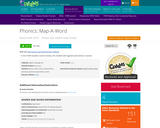
For this activity, students segment phonemes in words.
- Subject:
- English Language Arts
- Material Type:
- Activity/Lab
- Provider:
- Florida Center for Reading Research
- Author:
- FLorida Center for Reading Research (FCRR)
- Date Added:
- 02/26/2019

For this activity, students segment phonemes in words.

Students complete a chart by identifying the prefix and writing it's meaning.

This information was gathered while attending a break-out session at the 2021 ASCD Annual Conference. Dr. Teresa Hill presented this information based on her analysis of student-teacher and student-student interactions after they resumed in-person learning. She is currently the Superintendent of South Holland District 151 in South Holland, IL.

This lesson teaches students about pronoun-antecedent agreement. Students work with a draft of their own writing to correct mistakes with agreement in their own writing.

For this interactive, students are given a set of words to rewrite using correct adjecive order. The activity tracks students' time and progress.
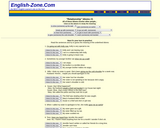
Students will look at each sentence and read the underlined idiom. Next, students select the answer that gives the meaning of the underlined idiom. Students receive immediate feedback after each sentence for their response.
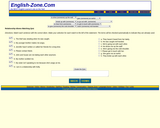
Students will match each sentence with the correct idiom.
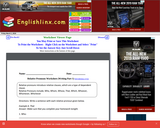
Students write a sentence using the relative pronouns provided.

This resource accompanies our Rethink 3rd Grade ELA course. It includes ideas for use, ways to support exceptional children, ways to extend learning, digital resources and tools, tips for supporting English Language Learners and students with visual and hearing impairments. There are also ideas for offline learning.

This course was created by the Rethink Education Content Development Team. This course is aligned to the NC Standards for 5th Grade English Language Arts.

This resource accompanies our Rethink 5th Grade ELA course. It includes ideas for use, ways to support exceptional children, ways to extend learning, digital resources and tools, tips for supporting English Language Learners and students with visual and hearing impairments. There are also ideas for offline learning.
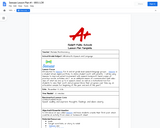
Introduction to Seesaw for K and 1st grade level speech/language groups . Seesaw is a student driven digital portfolio, to share student work with parents.. I will be using Seesaw to improve parent involvement with speech homework (send copies of practice words, activities, etc.) as an additional means of communication (add video clips of what we are up to in speech class), as well as a motivational tool for students to view their work and progress (show their progress over time, eg., an articulation sample for beginning of the year and end of the year).
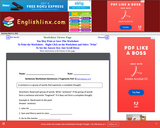
Students read each group of words and write "sentence" if the group of words form a sentence and write "fragment" if it does not form a complete thought.

Students order word cards from weakest to strongest.

Students order word cards from weakest to strongest.

This lesson focuses on the author's use of language; moreover, how it is used to convey mood, images, and meaning. Students are tasked here with examining a selection identifying examples of stylistic devices within the passages. Next, students discuss possible reasons for author's selected style choices. The lesson is detailed with examples from Zora Neale Hurston's Their Eyes Were Watching God, yet the lesson may be altered to be used with other instructor selected text.
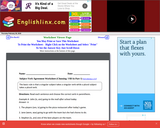
Students read each sentence and choose the correct verb for sentences 1-6 and write the present-tense of each verb in parentheses that agrees with the number in sentences 7-11.

Students read each sentence and choose the correct verb for each sentence.

Students read a passage and answer questions about summarizing skills. An answer key is included.

Students write the superlative form of adjectives.